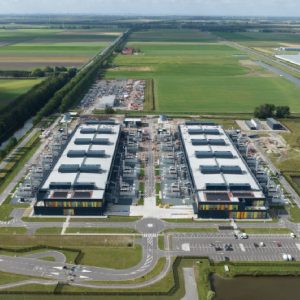
HPC clusters are used to underpin big data platforms that analyse large amounts of data, or to run applications like advanced 3D modelling and event simulation.
As more and more businesses turn to these sophisticated tools, Lisa Rhodes, VP of corporate strategy and business development, at Verne Global talks us through the five reasons why HPC applications can – and should – be hosted in a green data centre:
1. Power mad
HPC applications are compute-intensive and require mammoth amounts of energy. Although advances in processor design means that these systems are becoming more efficient, modern designs still draw megawatts of power. For example, Tianhe-1A, a supercomputer in China, consumes 4.04 Megawatts of electricity. The cost to power and cool these systems can be significant – hundreds of pounds an hour or millions of pounds over a year. Arguably, increasing demand for HPC applications can make life difficult for data centre managers because of the amount of energy these compute-intensive applications consume.
Moving applications to a facility that draws the power it needs from 100% green energy sources – like geothermal and hydroelectric sources – ensures businesses have a constant stream of energy to keep their operations going and, furthermore, avoid finding themselves on the sharp edge of volatile energy markets.
These sources are sustainable, environmentally "green" resources with minimal carbon trade-offs. However, having a completely green energy powered grid is far from the norm. While there have been many attempts to integrate renewable energy supplies into the UK national grid, coal remains the largest contributor to the country’s power network. Iceland in its entirety, on the other hand, relies solely on renewable power.
Given power prices vary significantly between world regions – and fossil fuel prices are the main driver of electricity prices in most markets – Identifying what the main source of power is to your facility can be crucial.
2. Sustainable in more ways than one
If systems are located in traditional metropolitan areas, it is likely that these operations will also be drawing energy from traditional coal, oil or gas-powered grids, creating a significant environmental impact that is linked with these activities.
As more power is consumed, and with government regulations that limit carbon emissions being enacted globally, data centres are coming under intense scrutiny for how sustainable they are. The basic premise of a green data centre is that the power it uses has low, or preferably no, carbon emissions. Equally, the most efficient data centre isn’t green if it uses electricity from a high-carbon source such as coal.
Of course, hosting your HPC applications in a green data centre can play an integral part in enhancing the overall sustainable credentials of a company and its products. Take for example, BMW’s new i3 and i8 cars which were modelled using HPC-based design applications and, since these programmes were run on green supplies, ‘sustainability’ is rooted in the product’s full lifecycle.
3. Connectivity
Thanks to upgrades and constant improvements in telcom infrastructure, fiber connectivity and the capacity of those networks means that there is flexibility in where HPC applications can be placed. Unlike transaction-based applications, HPC applications use batch processes so they do not have low-latency requirements.
4. Location
Another factor of connectivity is, of course, location. Physical location is still a key consideration – you have to be able to get there. Thankfully the Nordics are well-located for both the European and US markets. Untouched by natural disaster, with access to an abundance of renewable energy and consistent investment over the years in undersea cabling, the region represents a strategic base for data centre operations. For example, a report by analyst house BroadGroup into the Icelandic data centre economy attests that its consistent investment in IT infrastructure and access to clean, carbon free energy has already served to attract an impressive range of global companies and their data centres operations to the country, including Opera Software, COLT Telecom, BMW, Datapipe and the Joint Nordic Supercomputer.
5. Cool runnings
Running a data centre at low temperatures has long been the norm. Often, additional technologies have been required to ensure that ambient temperatures remain within specified limits. However, as applications grow, the servers they run on need a commensurate amount of cooling to ensure they continue to function seamlessly, which adds further cost. Processor-intensive applications in particular generate a lot of heat that needs to be dissipated. Having equipment fail because it overheats can result in unnecessary downtime and expensive repairs.
Bonus cooling from ambient air reduces the demand for power. The Data Centre Risk Index reports that in the search for renewable energy and carbon neutrality "the colder climate allows improved free cooling or at worst reduced mechanical cooling and with access to almost limitless supplies of hydro power or alternative renewable energy at comparatively inexpensive rates." It is reported that in the US, $7.4bn is spent on cooling data centres annually, and while cooling IT equipment with outside air may present an obvious solution, location is unsurprisingly the overriding characteristic as it governs the availability and quality of the ‘free cooling’.






